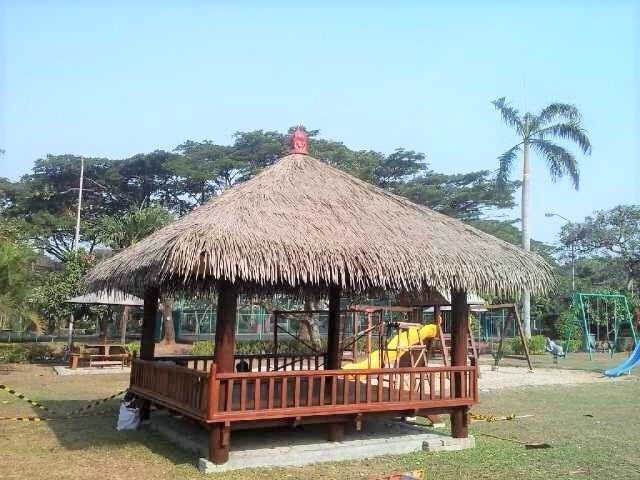Rethatching Your Bali Hut... Thatch or Synthetic? "What you should know"

Bali Huts are becoming one of the most popular Gazebo options in Australia. With the ever growing trend in "outdoor, resort style living", the Bali Hut provides that sense of tropical paradise we all have grown to love! An ideal way to provide protection from the harsh elements especially around a pool area without have an intrusive iron roof monstrosity that is an eyesore in your tropical setting.
For those of us who have the beloved Bali hut, maintenance is a must to ensure the best possible life from your Hut. Whilst you may already maintain your hut on a regular basis, and the general structure looks like new, Unfortunately if your hut has an Alang Alang or thatch roof, you are limited in what you can do to extend the life of the roof.
Whilst these roofs seem to fair well in Bali, the harsh conditions in Australia are significantly different. Bali doesn't have the regular high winds we experience and they certainly don't have the pest problem with birds we have here at home!
So, there will come a point where your Bali Hut Thatch roof is beginning to look somewhat "worse for wear" than the rest of your hut and there are very good reasons for this.
Although Thatching comes in various types and composition, the natural UV will dry these out over time and become brittle with an inability to "bend". Wind damage will start at this point breaking the strands and reducing its ability to withstand wind from getting under the thatch causing further damage. The first most noticeable evidence of this is actually being able to see sunlight through the thatching in areas.
Add to this the bird nesting season where birds attack the thatching in an effort to build nests for the upcoming young! The average lifespan of thatching is 4 to 5 years so you need to keep this in mind for future costs.
What are my options you may ask?
Well, if you are starting from scratch, consider a shingle roof. Whilst these are a premium in both quality and cost, it doesn't help those with existing Bali Huts or those of us who are in love with the thatch roof look.
Replacing your existing thatch roof is no cheap exercise costing somewhere around $75 per square meter (depending on the quality) and, that's if you are handy enough to do the labour yourself. With the standard Alang Alang or Thatch, this will become an ongoing cost every few years to keep your hut looking like new.
With technology constantly evolving, there is now a NEW replacement product on the market. The new VIRO THATCH is a game changer in the thatching market currently used in many countries around the world. Made from an Environmentally friendly synthetic material, VIRO Thatch is UV resistant, high density Polyethylene material that comes with a 20yr limited manufacturer's warranty!
Other benefits include: 100% waterproof, mould resistant, bird/wind proof, 100% maintenance free, fade resistant, Chip and Termite resistant.
If you have been to Indonesia, chances are that you have sat under a Bali hut with VIRO Thatch and not even known the difference! VIRO Thatch is available in two colours being "Bali Thatch" or "Java Thatch" which are both manufactured to look like Alang Alang or African Thatch.


Comparing costs compared with conventional Thatch is surprisingly cost effective when taking into account VIRO Thatch's durability. To rethatch your Hut in VIRO Thatch would cost $135 per square meter. Whilst initially more expensive, comparing life span of up to 4 times of conventional Thatch, VIRO Thatch equates to half the price of normal Thatching.
For more information Contact Us
See one of our replacement projects
Examples of VIRO Thatch synthetic replacement


|
Posted on July 29 2018